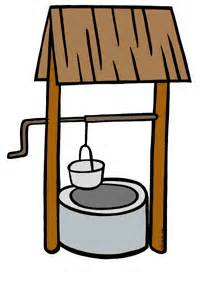
Water News for September 2025
Raw Sewage Taints the Delaware River
Philadelphia discharges an incredible 12.7 billion gallons of raw, diluted sewage into the Delaware River’s watershed each year according to a new report. The Philadelphia Inquirer.
Amazing Recovery of the Klamath River after Hydroelectric Dam Removal
The final of four hydroelectric dams was removed last year from the Klamath River, in the largest project of its kind in US history. The following July, 28 teenage tribal representatives completed a 30-day journey that spanned roughly 310 miles (500km) from the headwaters in the Cascades to the Pacific. They were the very first to kayak the entirety of the mighty river in more than a century. The Guardian.
Water Projects Ordered Cancelled May Not Be Cancelled
A week after the White House signaled its intention to “immediately” pause or cancel $11 billion worth of water projects in 12 states that lean politically toward Democrats, it’s unclear what — if any — work might be affected.
The Army Corps of Engineers, which would oversee those projects, lacks the authority to cancel work authorized by Congress, multiple former corps officials said.
A former corps official, who is now senior adviser at Dawson and Associates, a Washington firm specializing in federal water regulation and environmental permitting, said he doesn’t know of any funds being paused or redirected away from blue-state projects. E&E News.
Severe Drought in Washington
Unprecedent drought conditions in Washington’s Yakima River Basin has made necessary a population-wide total ban on irrigation and lawn or garden watering. This is Washington’s third straight drought year in a row. Seattle Times.
Congresswoman Seeks Release of PFAS Report
A drinking water report studying the toxicity of perfluorononanoic acid, or PFNA, from the U.S. Environmental Protection Agency finalized in mid-April has yet to be released to the public, sparking concerns from Representative Chellie Pingree.
PNFA is a type of per- and polyfluoroalkyl substance, or PFAS. PFAS encompass thousands of man-made chemicals found in everyday items like non-stick cookware, firefighting foams, grease-resistant food wrappers, water-resistant clothing and other items. PFAS, known as “forever chemicals” because of the long time it takes the chemicals to break down, can cause harm in high exposure amounts.
During the breakdown process, PFAS can leach into the soil and water supply. These chemicals also threaten the water supply when products containing them are dumped onto the ground or into lakes and rivers. A 2023 study from the U.S. Geological Survey found that PFAS are present in the tap water of nearly half of U.S. homes.
On October 16, Pingree, a Democrat from Maine, sent a letter to EPA Administrator Lee Zeldin asking him why the report has yet to be released and who is responsible for its delay, among other questions. Newsweek
After Decades, Camp LeJeune Water Scandal Still On Hold in Congress
Decades after Marines and families at North Carolina’s Camp Lejeune bathed and drank in poisoned water, the law meant to bring them justice has stalled. The 2022 Camp Lejeune Justice Act — intended to finally allow victims their day in court — has instead become mired in legal backlogs and procedural fights.
As medical bills mount from lifetimes of chronic illness and loved ones pass away, families say Washington’s delays have turned a promise of justice into yet another bureaucratic waiting game. Fox News for full article.
Another Chemical Industry Lobbyist Being Appointed to EPA
The US Senate is poised to approve Donald Trump’s nomination of an industry lobbyist to lead the US Environmental Protection Agency’s chemical safety office. If the nominee, Douglas Troutman, is confirmed, the top four toxics office positions at the EPA will be held by former chemical industry lobbyists, raising new fears about the health and safety of the American public, consumers and workers, campaigners say.
“The lunatics are running the asylum, and industry is firmly in charge of chemical safety,” said Scott Faber, vice-president of government affairs for the Environmental Working Group non-profit, which lobbies on chemical safety issues. “They will stop at nothing to reverse the progress that we’ve made in recent years on toxic chemicals.” The Guardian
Politics and the Waters of the United States
In 2023, the U.S. Supreme Court narrowed the definition of the Waters of the United States in the case Sackett v. Environmental Protection Agency. The result of that decision is estimated to have eliminated more than half of the nation’s wetland acres eligible for protections by the Clean Water Act. Iowa Public Radio.
Nobel Prize for Chemistry
Susumu Kitagawa, Richard Robson and Omar Yaghi were awarded the Nobel Prize in Chemistry 2025.Using techniques that they discovered, other scientists are applying their techniques to applications that include separating PFAS from water, breaking down traces of pharmaceuticals in the environment, capturing carbon dioxide or harvesting water from desert air. Water Online.
Lead Pipe Removal Lags As Federal Government Fails to Release Funds
The Trump administration is months behind schedule in distributing an estimated $3 billion to remove and replace lead water pipes, delaying infrastructure projects critical to protecting people from the toxic heavy metal. The 2021 infrastructure law included $15 billion to help fund the replacement of millions of lead-based drinking water pipes nationwide. The money has been divvied up and distributed in tranches to states each year, typically in the spring.
But nearly five months after EPA announced other funding this year for water projects through the State Revolving Funds, money for lead pipes remains held up. At least three states with a large number of lead pipes — Wisconsin, Michigan and Massachusetts — said the delay could push back construction schedules for pipe replacement projects. Politico Pro
Heavy Rains Increase Microplastics in Water
Research conducted in India and South Africa demonstrates a sharp increase in microplastics in water after heavy rains. Yahoo News.
Microplastics Are Concentrated in Brain Tissue
A new study at the University of New Mexico Health Sciences, which examined the bodies of 47 cadavers, found microplastics in the brain are much higher in concentration than other parts of the body.The worst part is that this concentration has increased by 50% in only eight years. Researchers found 4,800 micrograms of microplastics per gram of brain tissue, the equivalent of a plastic spoon in total. Though the exact impact is unknown with these microplastics, One of the researchers said, “We start thinking that maybe these plastics obstruct blood flow in capillaries. There’s the potential that these nanomaterials interfere with the connections between axons in the brain. They could also be a seed for aggregation of proteins involved in dementia. We just don’t know.” Yahoo News.









